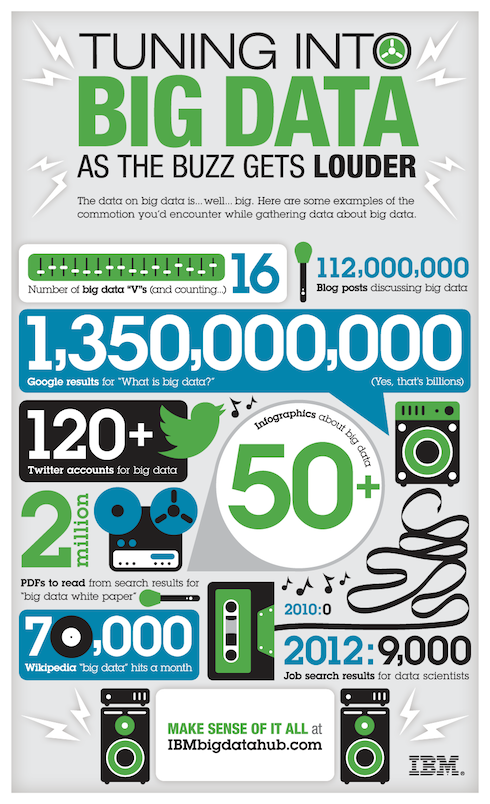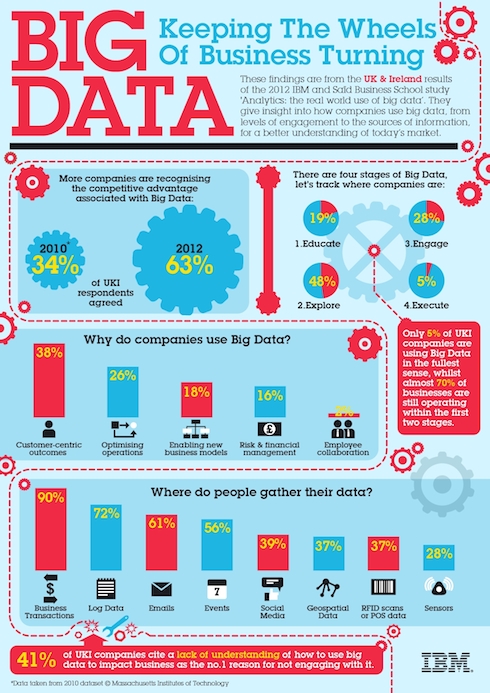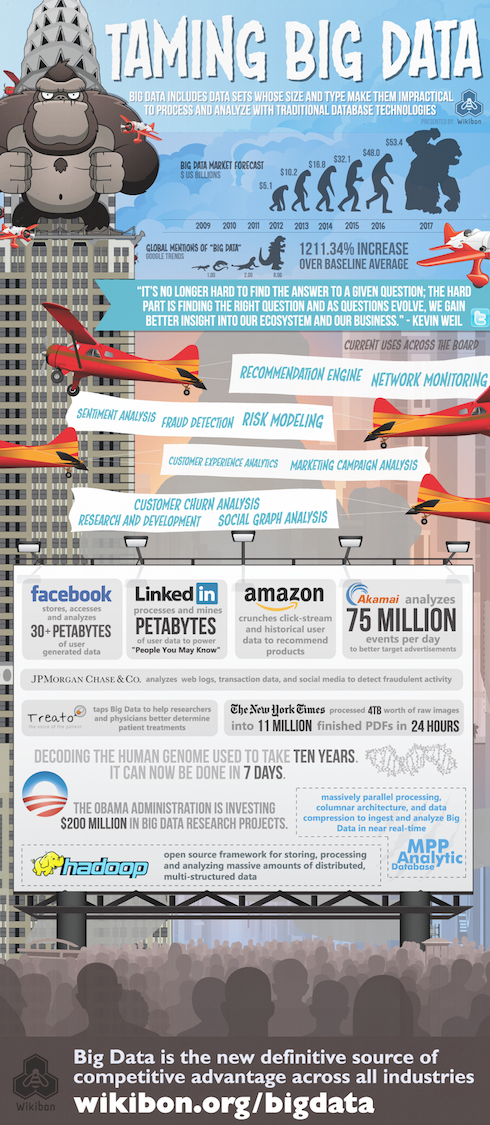By adaptive - August 26th, 2014
To get any value from Big Data corporations need to clearly define the information they need to leverage in order to deliver high levels of ROI
In the first part of this series examining the role of Big Data in social media we looked at how it has the potential to transform customer insight. In the second part we considered the methodologies that corporations can adopt in order to sift through the data. In this final section we are asking the question - what type of content should your corporation be filtering out to influence sound commercial business decisions?
Ingersoll Rand is a $10 billion diversified industrial company with over 40,000 employees and 75 manufacturing facilities worldwide. Their goal was to gather as much data as they could in order to drive customer service and their relationships within the B2B markets they operate within.
The corporation utilised Big Data to achieve these goals and managed to improve customer relationships, training of their sales staff and their operations. Their Big data activities also helped them to manage the business more effectively. The system they implemented was designed by Alteryx and allowed them to listen, interpret, react and monitor the data in ways that they measured against their key indicators.
For Ingersoll Rand, the implementation of a rich technology solution and an understanding of their overall goals gave them the tools they needed to improve service and operational capabilities as they were able to listen to what Big Data had to say.
According to a recent Gartner report, one third of Fortune 100 organisations are facing an information crisis thanks to the surge in Big Data. Gartner points out how the businesses need to focus on the information that is the most relevant and generates the most value. They also predict that in the next three years a startling 33% of these organisations won’t have the ability to control, trust and value the information that comes from Big Data.
Marc Blinder, Director, Social and Strategic Marketing at Adobe explains: “The value is all in the eye of the beholder. Governments may use social data to predict terror attacks, non-government organisations may try to identify human rights abuses, businesses may be using it to improve products or sell cars, 24-hour news channels may use it to fill a slow news day.”
The content analysis
The Gartner 2013 Digital Marketing Spending Survey revealed that content curation and social marketing made up around 21% of marketing budgets with around 47% of companies seeing the development and curation of content as a vital part of the role undertaken by the social marketing department. Now add to this the avalanche of data that’s streaming into corporations and you have a number of challenges that few corporations are equipped to overcome.
Karine Del Moro, VP Marketing at Confirmit highlights some key steppingstones in answering the question of Big Data content:
- Track user engagement across different social media platforms.
- Track the relative community growth and community engagement for your brand and competitors.
- Identify what content drives engagement for each key social media platform.
- Deep dive analysis into specific campaigns, product launches, industry events.
- Track relative share of buzz by product over time and attributes of products that are driving positive and negative buzz.
- Track key influential users for a particular industry segment and their connectedness
Determining what content has relevance also means asking how the information can be used to improve the business and how it can deliver value across the organisation.
Technology plays an important role in helping corporations to extrapolate which data sets they need and analysing them within specific parameters. Understanding Big Data demands that there are guidelines within which the experts can do their work. Finding answers in the mass of data isn’t a matter of asking a question and getting an answer, as pointed out in a recent blog post by IBM’s James Kobielus: “Deeply grasping any knowledge domain is sort of like a Zen state of enlightenment. The more deeply you possess it, the more completely you are aware of the limits of your understanding.”
Del Moro adds: “Relevant data is different for every business. For example, customer feedback could help shape the development of a product in real time. A business might make changes to a service offering based on real feedback rather than a theoretical understanding of their customers. There is value in aligning the analysis that is being performed with social media analytics as this enables the business to validate the insights it is getting from both sources.”
In the Cisco Connected World Technology Report the company found that most organisations were collecting and analysing data but that they were struggling with both the business and IT challenges of Big Data. An impressive 60% agreed that it would improve decision-making and competitiveness but only 28% felt that they were already experiencing these benefits and receiving strategic value from their data.
“Better data means better decisions – it’s that simple,” says Blinder. “When businesses start collecting all this data it may take a while to adapt the techniques and processes to actually take advantage of it, but it happens in the end.”
Gartner suggests three steps to managing data and pulling the right content into the business:
- Manage information, don’t just maintain it – enterprise information management (EIM) gives people the ability to share, manage and reuse information across the organisation.
- Identify the information – Identify crucial business outcomes that need to improve and the leaders most affected by these and use these parameters to set the priorities for the EIM programme.
- Governance – knowing the impact of data on the business will allow users to make informed decisions and manage the data more effectively.
Big Data then is an asset that all corporations have available to them. The mass of data that now streams into each organisation minute by minute can be made sense of if your corporation clearly understands what data it is looking for. Trends, customer behaviour, sentiment and advocacy can all be seen in Big Data, it’s now vital that your corporation places this insight into context and leverages it to maximum commercial benefit.
Image Source: Freedigitalphotos.net
Next Reads
November 2014, London
Become a social business! #CSMEU is the largest and most senior meeting of social media and marketing execs, giving you unrivalled insight into how social can drive your business growth & competitive advantage
Brochure Programme


